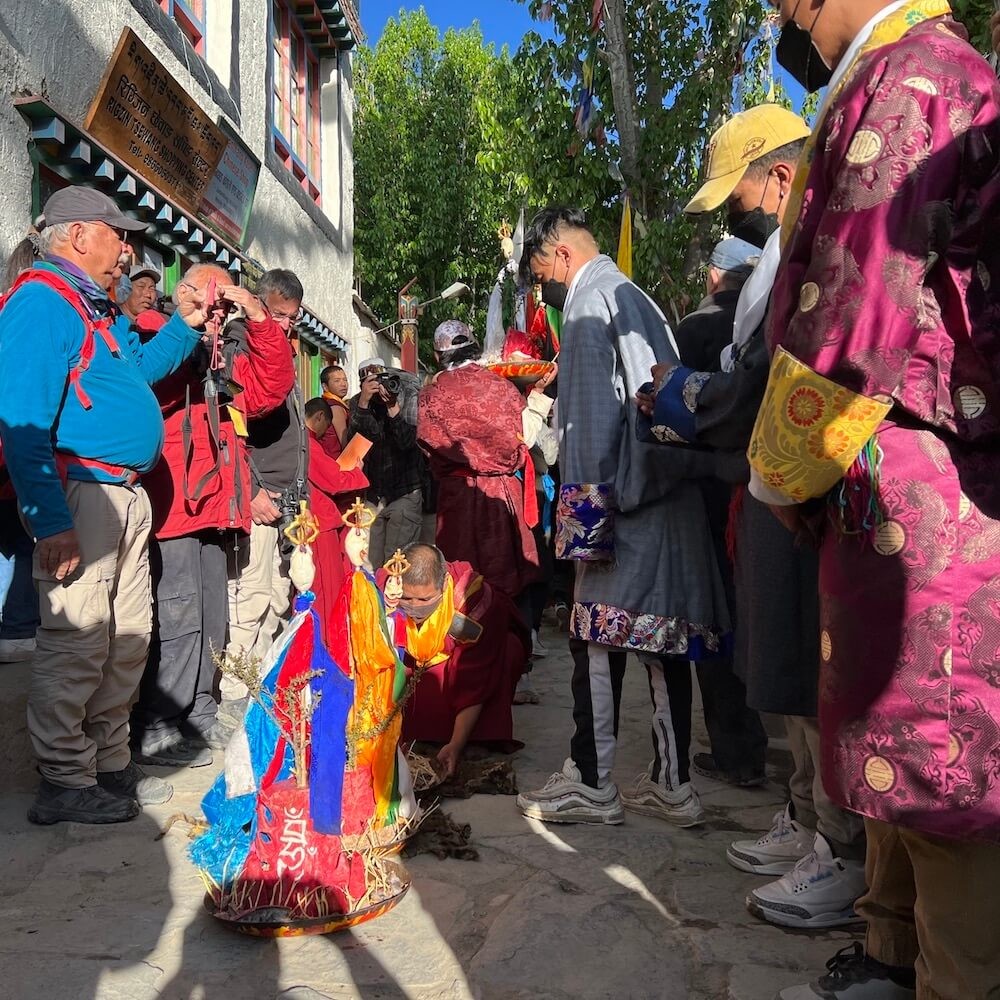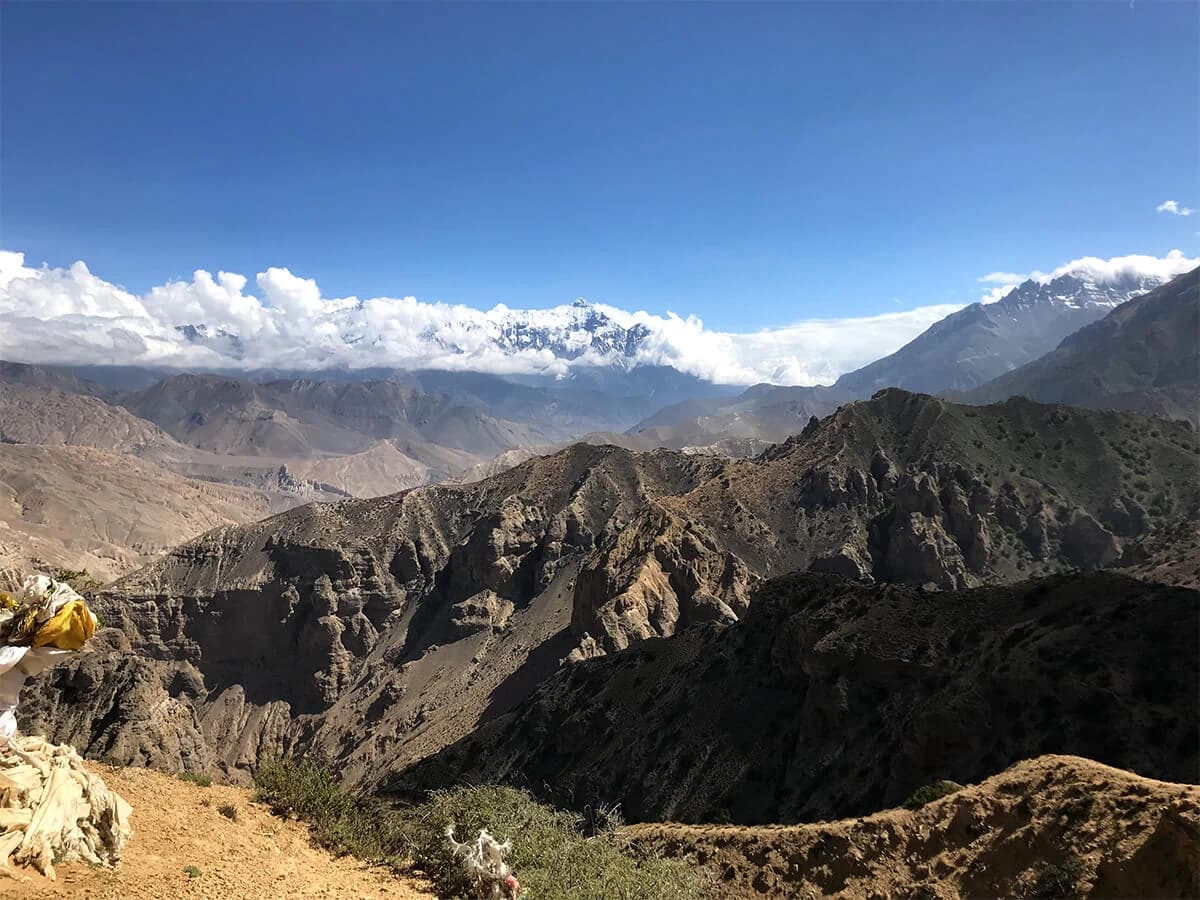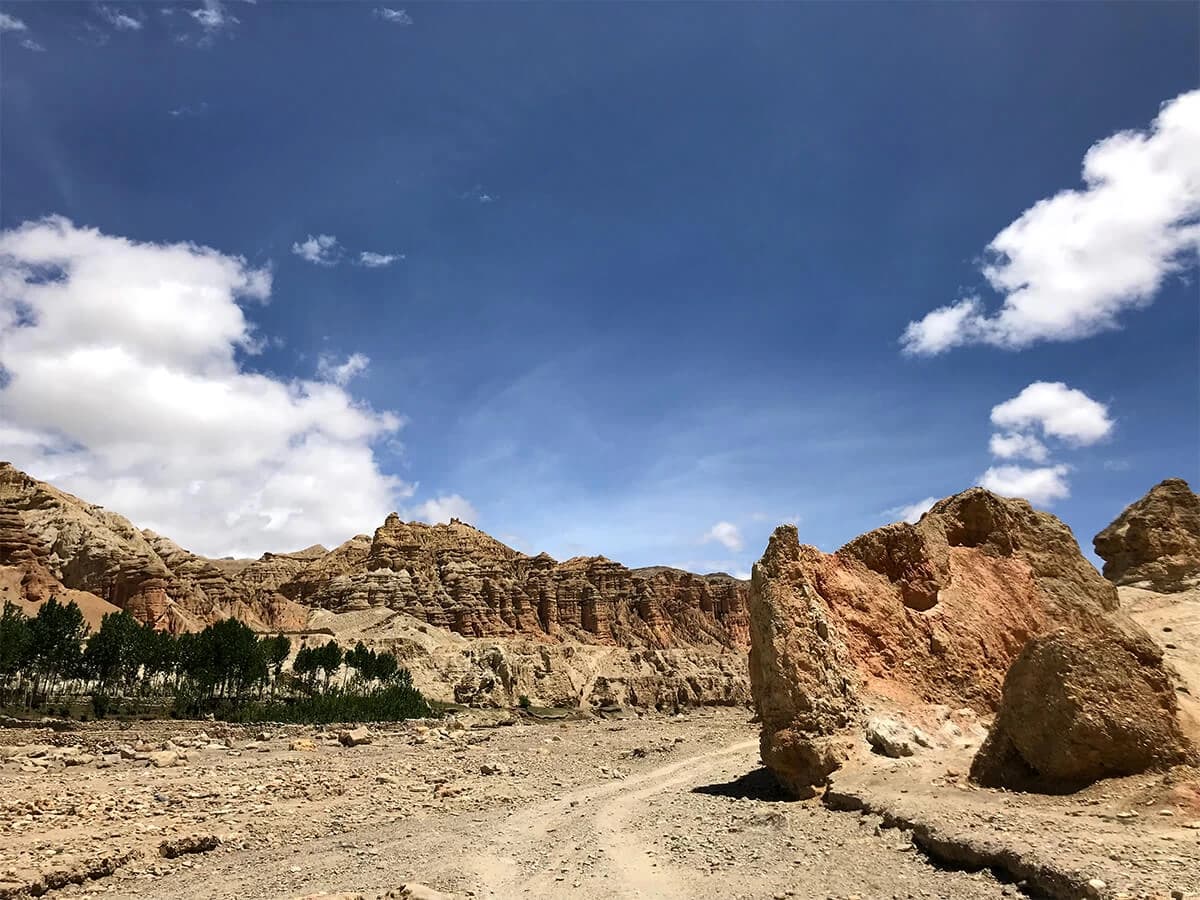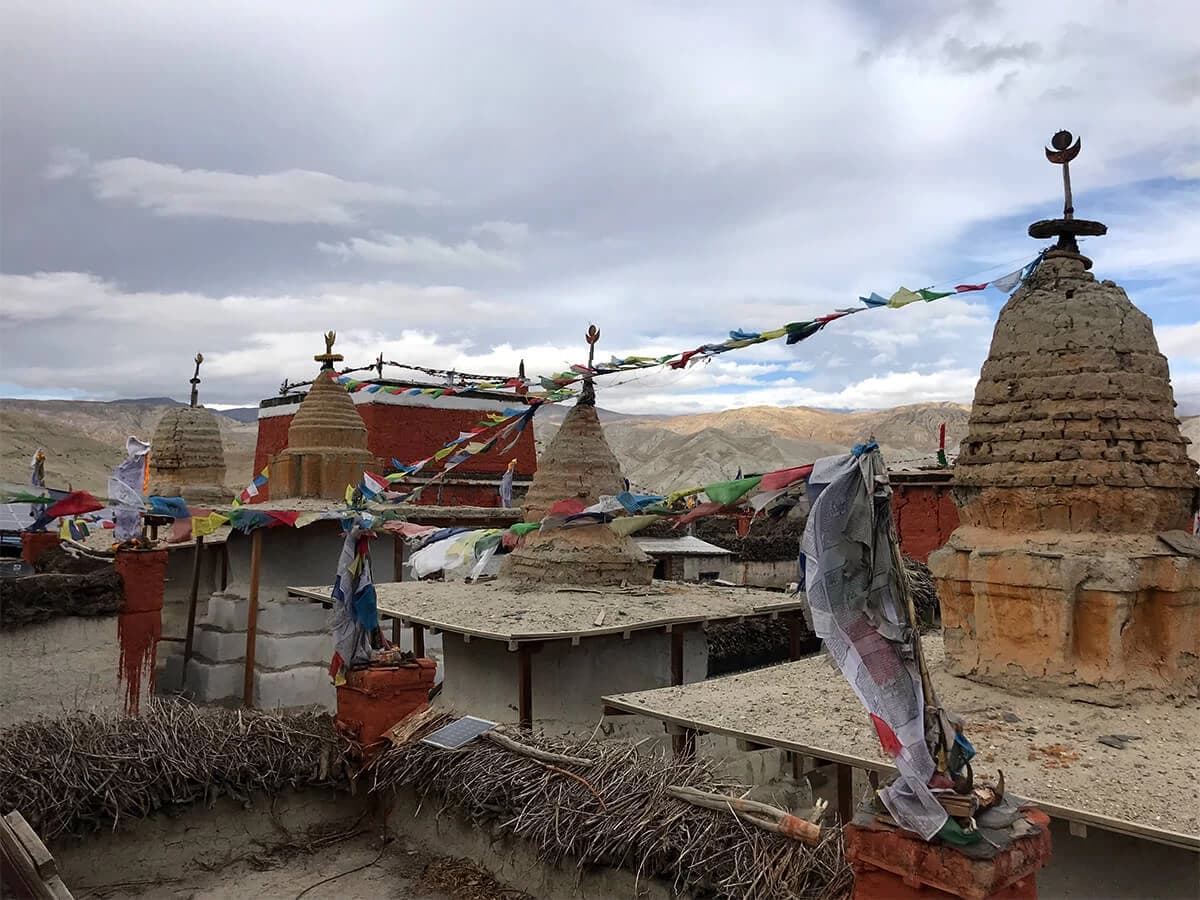Upper Mustang trek takes you around the restricted zone which is famous for its desert-like climate and harsh rock-faced landscapes. Upper Mustang is one of the best tourist destinations of Nepal which can even be visited in summer monsoon. When the lower part of Nepal goes through heavy rainfall and flood, you can explore the rain-shadow area, Upper Mustang. The geography and culture of this northern Himalayan region of Nepal match with that of Tibet rather than with Nepal.
The trek to Upper Mustang gives you an opportunity do something extraordinary without pushing your body to its limits. Simply put, our Upper Mustang trek is a fairly easy excursion to the ‘Last Forbidden Kingdom’ known locally as Lo Manthang. It lies in the remote frontiers of Nepal, which is geographically connected with Tibetan plateau with an average altitude above 3,000m.Tibetan Buddhist culture and tradition have a great influence which is proved by the ancient monasteries and festivals found here.

The small Kingdom of Lo Manthang inhabited mainly by a minority group of Tibetan origin was previously a restricted area (before 1991). Foreigners still need a special permit to embark upon this fascinating journey through incredible landscapes, prehistoric caves and age-old monasteries. A large stretch of land in Upper Mustang region is like desert despite having snow-capped mountains at its northern rim. This is why, it is often referred to as the ‘mountain desert’ of Nepal and the ‘District across the Himalayas’.
The fact that this region receives much less rainfall than other parts of Nepal makes this trek the most preferred trek during monsoon. Do you want to witness the lifestyle, culture and religion of the natives of the harsh and predominantly arid yet innately beautiful terrains? If the reply is ‘yes’, trekking to upper Mustang can quench your thirst to gain lifelong knowledge about such harsh landscapes! Additionally, there are a lot of things this trek has to offer you such bonus stopovers at Jomsom and Muktinath.

If you plan your Upper Mustang Hiking around the second week of May, you can observe Tiji Festival in Lo Manthang. This festival is organized by the monks of Chhode Monastery for three days at the premises of Lo Manthang Palace. The spectacular panorama of the snowcapped peaks of Annapurna and Dhaulagiri ranges are other assets of Upper Mustang Lo Manthang trek. The ancient Buddhist monasteries like Chhode, Tsrang, Jampa, Thubchen, Ghar and Luri are around 800 years old.

You can also visit the Sky Caves, a group of around 10,000 man-made caves close to the Kali Gandaki River. Lo Manthang trek introduces you with these caves dug to mummify the dead bodies as per the culture and tradition. A study about the Sky Caves has shown that they are archeologically important and are about 2,000 -3,000 years old. The manuscripts, Buddhist art, paintings and pottery of the caves have further clarified the report published by the study.

You can find Upper Mustang trek itinerary from 14 days to 26 days differing from one trekking agency to another. Based on your vacation, budget and willingness to travel through the mountain trail, this trekking package can be customized. For customized package of Upper Mustang trek, you can contact Orbit Alpine Adventure via phone call, email or online booking. We have presented a 17-day Upper Mustang trek itinerary in this article for your convenience.
Highlights
- A scenic flight from Pokhara to Jomsom enjoying the aerial view of Annapurna and Dhaulagiri ranges including distant view of Manaslu region
- Exploration of the Capital City of the Last Forbidden Kingdom of Lo Manthang
- Desert beauty and harsh landscapes of the rain shadow area
- Influence of Tibetan Buddhist culture in the lifestyle of the Mustangese people
- The 12th or 13th century Buddhist monasteries found at least one in a village
- Mani walls, prayer flags and wheels, chortens beautifying the villages
- Magnificent panorama of pristine valleys, bizarre landscapes and snowy peaks of Annapurna region
- Familiarity with Muktinath Temple, a shrine equally important for both Buddhists and Hindus


